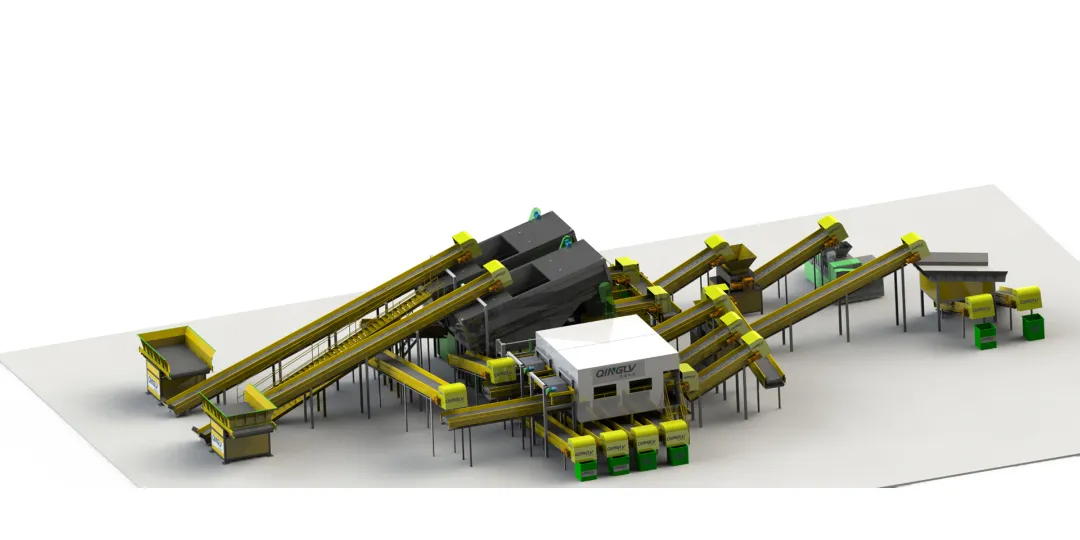 Time:2024-12-31
Time:2024-12-31
 Source:青绿环境
Source:青绿环境
With the acceleration of urbanization, the construction industry is booming, and decoration activities are becoming increasingly frequent. However, the large amount of waste generated during the decoration process—decoration waste—has become a major challenge for city management. These wastes not only occupy valuable land resources but also have the potential to cause environmental pollution. Therefore, understanding the main components of decoration waste and their treatment methods is of great significance for promoting the recycling of resources and environmental protection.

Decoration waste mainly consists of the following six parts:
1. Waste concrete, bricks, and mortar. This type of waste is primarily generated during the reconstruction of non-load-bearing walls of buildings. Due to their large volume and heavy weight, these materials are relatively difficult to handle.
2. Waste metal and glass. This type of waste mostly comes from the transformation and replacement of safety protection facilities, such as guardrails and doors and windows. Although these materials can be recycled, they require professional sorting and treatment.
3. Floor tiles, wall tiles, wooden flooring, wallpapers, and wall fabrics. These wastes are the most common discards during house decoration or renovation. They usually need to go through specific sorting and treatment methods for resource utilization.
4. Wooden blocks and man-made boards. This type of waste mainly comes from the waste generated when custom cabinets and keel structures are made. They have a certain recycling value but need professional treatment before reuse.
5. Cardboard and plastic. This type of waste mainly belongs to various packaging bags and other light materials, which are relatively easy to handle but also require attention to classification and recycling.
6. Other hazardous wastes. Such as paints, coatings, adhesives/emulsions, and packaging materials, these wastes contain harmful substances. If not handled properly, they will have a significant impact on the environment and human health.
These components are complex and diverse, requiring specialized treatment lines for effective sorting and recycling:
The decoration waste resource recovery line is an integrated system that includes various equipment, such as feeders, bouncing screens, positive pressure air separators, bar screens, drum screens, and crushers. These devices work together to perform a series of processes on decoration waste, including crushing, size screening, density screening, magnetic separation, air separation, eddy current separation, and dust removal. Through these processes, valuable materials such as metals, wood, plastics, glass, non-ferrous metals, recycled aggregates, and RDF (refuse-derived fuel) can be effectively separated, achieving resource recovery and reuse.
During the treatment process, the feeder first introduces decoration waste into the treatment system. Then, bouncing screens and positive pressure air separators are responsible for removing light materials and dust. Bar screens and drum screens grade the materials based on size. Crushers break down large materials for further sorting. Finally, magnetic separators and eddy current separators extract metallic and non-metallic materials, respectively. Throughout the process, the dust removal system operates continuously to ensure that emissions meet environmental protection standards.
Through such a treatment process, the useful components in decoration waste are effectively recovered and utilized, reducing the demand for new resources and also alleviating the burden on the environment. For example, recycled metal materials can be remelted, wood and plastics can be reprocessed as raw materials, and recycled aggregates can be used to make new building materials.
In summary, decoration waste treatment is not only a technical task but also a responsibility. Through scientific methods and advanced equipment, we can transform these seemingly useless wastes into valuable resources, achieving a win-win situation for both economic and environmental benefits. In the future, with the continuous advancement of technology and the improvement of people's environmental awareness, the resource utilization of decoration waste will become more efficient and widespread, contributing to the construction of a green home.













 Prev
Prev











